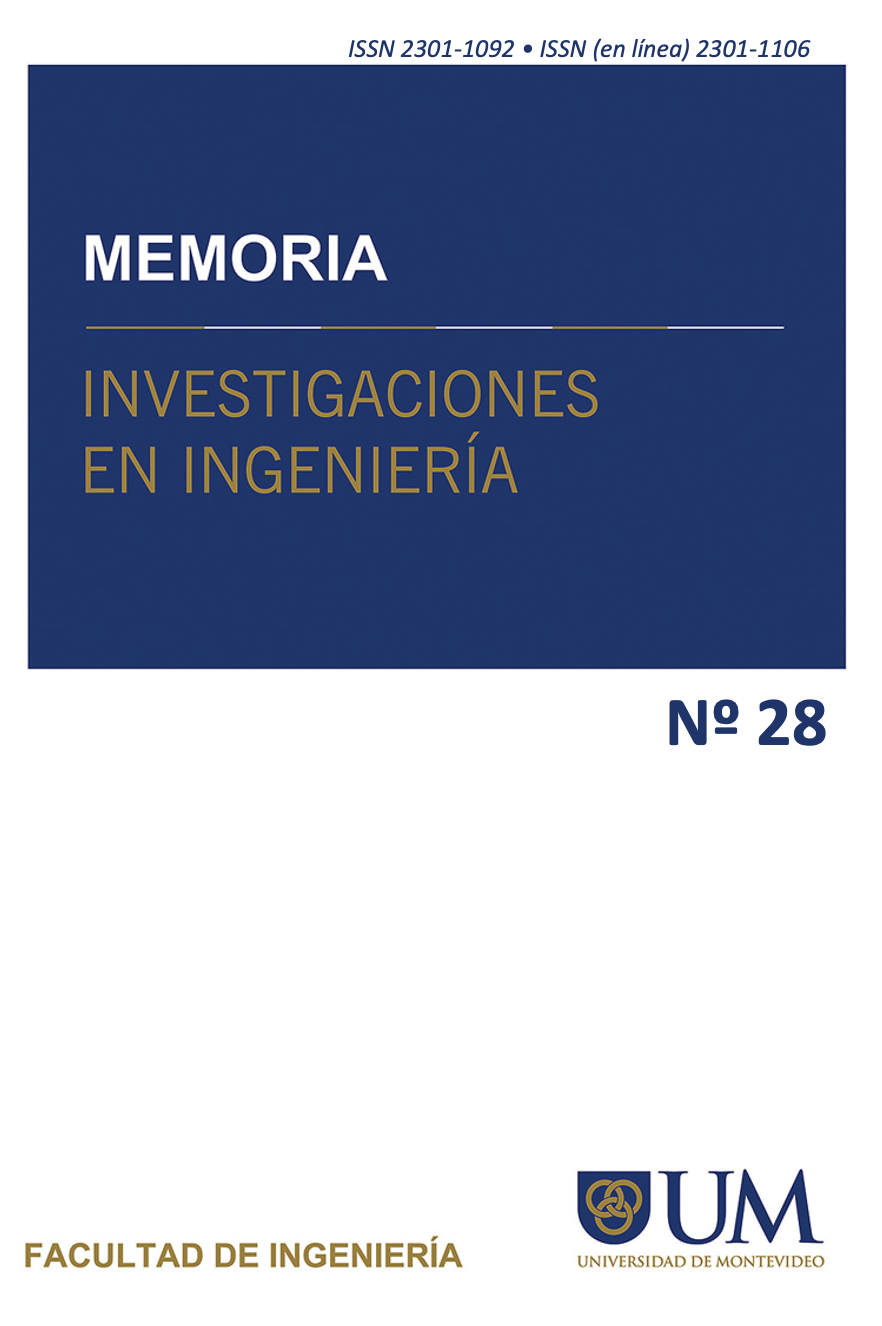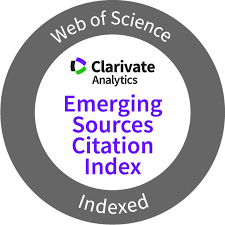Caracterización mecánica de uniones soldadas TIG Al 6082-T6 templadas después de la soldadura
DOI:
https://doi.org/10.36561/ING.28.6Palabras clave:
Soldadura TIG, propiedades mecánicas, Al 6082-T6, medios de enfriamientoResumen
Esta investigación busca mejorar la eficiencia de las uniones soldadas mediante una metodología rentable. El aluminio 6082-T6 es el material elegido debido a su uso frecuente en aplicaciones que requieren resistencia intermedia con bajo peso. Las operaciones de soldadura suelen provocar una reducción de la resistencia del material de hasta un 50 % debido al elevado calor de entrada. Por lo tanto, este estudio se centra en mejorar la resistencia mediante técnicas de temple con diferentes medios, como arena, agua y aceite hidráulico. Se realiza un análisis comparativo de las propiedades mecánicas basado en el temple de las uniones soldadas con estos diversos medios. Además, se realiza un examen de la microestructura para facilitar este estudio comparativo. Las propiedades mecánicas investigadas incluyen dureza, resistencia a la tracción, límite elástico y tenacidad, con el objetivo de comprender el impacto de los diferentes medios de temple. La investigación revela que las uniones refrigeradas por agua presentan un mayor límite elástico, mientras que las refrigeradas por aceite demuestran una resistencia a la tracción superior en comparación con otras uniones. Además, la ductilidad de las uniones refrigeradas por aceite es notablemente mayor, medida mediante el porcentaje de elongación. El enfriamiento por agua produce una dureza notable tanto en la zona de soldadura (ZS) como en la zona afectada por el calor (ZAC) debido al rápido enfriamiento. Por el contrario, la dureza de las uniones enfriadas con aceite no es significativamente diferente de la de las uniones soldadas enfriadas con agua. Con respecto a la tenacidad, las uniones enfriadas con aceite muestran una mayor energía de impacto en la ZAC en comparación con las templadas con agua, arena y aire. Sin embargo, en la ZS, las uniones enfriadas con aire exhiben una energía de impacto superior, lo que indica directamente mejores propiedades de tenacidad. Por lo tanto, las uniones enfriadas con aceite muestran una mayor tenacidad en la ZAC, mientras que las uniones enfriadas con aire son más tenaces en la ZS. En general, las propiedades mecánicas de las uniones enfriadas con aceite mejoran significativamente, lo que lleva a una mejora en la eficiencia de la soldadura del 55% al 72%.
Descargas
Citas
Baskutis, S., Bendikiene, R., & Ciuplys, A. (2019). Effect of weld parameters on mechanical properties and tensile behavior of tungsten inert gas welded AW6082-T6 aluminum alloy. Journal of Mechanical Science and Technology, 33(2), 765–772. DOI: https://doi.org/10.1007/s12206-019-0131-6
Kaba, L., Djeghlal, M. E., Ouallam, S., & Kahla, S. (2021). Dissimilar welding of aluminum alloys 2024 T3 and 7075 T6 by TIG process with double tungsten electrodes. International Journal of Advanced Manufacturing Technology, 118, 937–948. DOI: https://doi.org/10.1007/s00170-021-07888-5
Kumar, A., & Sundarrajan, S. (2009). Effect of welding parameters on mechanical properties and optimization of pulsed TIG welding of Al-Mg-Si alloy. International Journal of Advanced Manufacturing Technology, 42(1-2), 118–125. DOI: https://doi.org/10.1007/s00170-008-1572-8
Kumar, K., Kumar, C. S., Masanta, M., & Pradhan, S. (2022). A review on TIG welding technology variants and its effect on weld geometry. Materials Today: Proceedings, 50, 999-1004. DOI: https://doi.org/10.1016/j.matpr.2021.07.308
Li, J.-f., Zheng, Z.-q., Na, J., & Tan, C.-y. (2005). Localized corrosion mechanism of 2XXX series Al alloy containing S(Al2CuMg) and (Al2Cu) precipitates in 4.0% NaCl solution at pH 6.1. Journal of Materials Chemistry and Physics, 91, 325−329. DOI: https://doi.org/10.1016/j.matchemphys.2004.11.034
Miao, W. F., & Laughlin, D. E. (1999). Precipitation hardening in aluminum alloy 6022. Elsevier Science, 40(7), 873–878. DOI: https://doi.org/10.1016/S1359-6462(99)00046-9
Murali, N., & Li, X. (2021). TIG welding of dissimilar high-strength aluminum alloys 6061 and 7075 with nano-treated filler wires. In L. Perander (Ed.), The Minerals, Metals & Materials Series. Springer. DOI: https://doi.org/10.1007/978-3-030-65396-5_47
Muzamil, M., Wu, J., Samiuddin, M., Majeed, A., Siddiqui, S. U., & Mudassir, M. (2020). Macro-mechanical behavior of unique surface welded joints (AA5083) utilizing tungsten inert gas welding against single-stage homogenization annealing. Revista de Metalurgia, 56(3), e173. DOI: https://doi.org/10.3989/revmetalm.173
Prabhukhot, A. R., & Prasad, K. (2015). Effect of heat treatment on hardness of 6082-T6 aluminum alloy. International Journal of Scientific & Engineering Research, 6.
Rajkumar, T., Prabakara, M. P., Arunkumar, G., & Antony, A. G. (2020). Study on the feasibility in welding of low carbon steel and austenitic stainless steel joint using CO2 laser welding process and analysis of its metallurgical and mechanical properties. Wu Tan Hua Tan Ji Suan Ji Shu, 106(5), 471–476.
Rajkumar, T., Raja, K., Lingadurai, K., Vetrivel, S. D., & Antony, A. G. (2020). Interfacial microstructure analysis of AA2024 welded joints by friction stir welding. Journal of New Materials for Electrochemical Systems, 23(2), 123–132. DOI: https://doi.org/10.14447/jnmes.v23i2.a09
Reboul, M. C., & Baroux, B. (2011). Metallurgical aspects of corrosion resistance of aluminum alloys. Journal of Materials and Corrosion, 62, 215−233. DOI: https://doi.org/10.1002/maco.201005650
Shazad, A., Astif, M., Uzair, M., & Zaidi, A. A. (2024). Evaluation of preheating impact on weld residual stresses in AH-36 steel using Finite Element Analysis. Memoria Investigaciones en Ingeniería, (26), 225-243. DOI: https://doi.org/10.36561/ING.26.14
Shazad, A., Jadoon, J., Uzair, M., & Akhtar, M. (2022). Effect of composition and microstructure on the rusting of MS Rebars and ultimately their impact on mechanical behavior. Transactions of the Canadian Society for Mechanical Engineering. DOI: https://doi.org/10.1139/tcsme-2021-0207
Shazad, A., Uzair, M., Jamil, T., & Muhammad, N. (2024, December). A Comparative Study on the Joint Hardness and tensile properties of Dissimilar Aluminum Alloy using Tungsten Inert Gas (TIG) Welding. In 4th International Conference on Key Enabling Technologies (KEYTECH 2024) (pp. 173-178). Atlantis Press. DOI: https://doi.org/10.2991/978-94-6463-602-4_25
Shazad, A., Uzair, M., & Tufail, M. (2024). Influence of multiple post-weld repairs on mechanical and microstructural properties of butt weld joint utilized in structural members. International Journal of Precision Engineering and Manufacturing, 1, 1–8. DOI: https://doi.org/10.1007/s12541-024-01104-6
Sathish, T., Armalingam, S., Mohanavel, V., et al. (2021). Weldability investigation and optimization of process variables for TIG-welded aluminum alloy. Advances in Materials Science and Engineering. DOI: https://doi.org/10.1155/2021/2816338
Tan, C. F., & Said, M. R. (2009). Effect of hardness test on precipitation hardening aluminum alloy 6061-T6. Science Journal, 36(3), 276–286.
Zhu, J., Jiang, W., Li, G., Guan, F., Yu, Y., & Fan, Z. (2020). Microstructure and mechanical properties of SiCnp/Al6082 aluminum matrix composites prepared by squeeze casting combined with stir casting. Journal of Materials Processing Technology, 283, 116699. DOI: https://doi.org/10.1016/j.jmatprotec.2020.116699























